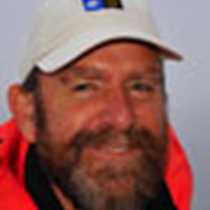Krossfjorden, NW Svalbard
Our arrival yesterday at the airport in Longyearbyen, the main settlement of Svalbard, was blessed by bright sunshine, and after a brief tour of the town nestled in its rocky valley with old coal mines on the steep slopes above, we were soon settling into the National Geographic Explorer. Welcomed by staff and crew, within the hour the ship was pulling away from the quay and heading out towards distant mountains gleaming white with snow. After a thorough lifeboat drill, we had time before dinner to gaze at deeply gouged mountains on either side of the widening fjord as we steamed out to adventure. After dinner the sun was still bright—we are 800 miles north of the Arctic Circle and it will not set for the next 6 weeks. Endless light! We looked out in wonder at dark jagged peaks striped with snow, a pearly sea with strings of seabirds heading toward the horizon to feed: dusky fulmars, the whirring guillemots immaculate in black and white tuxedos, several puffins like miniature parrots, and the absurdly tiny dovekies, buzzing a few feet above the ocean like beeline bumbles. This is the Arctic!
This morning we woke to a lively sea west of Prince Karls Forland, our course set for the north. Our gallant ship with its loyal escort of racing fulmars made short work of the surfing whitecaps: keen-eyed naturalists on the bridge even spotted a lone fin whale ahead. The seas eased as we turned inland and this allowed us time to attend an Arctic briefing on the protocols associated with this remarkable archipelago.
Administered by Norway, Svalbard is unique sanctuary of Arctic wildlife, two-thirds of its landscape protected as National Park, Nature Reserve, or Bird Reserve. Once inshore we turned northeast up one of its longest inlets, Krossfjorden, a 20-mile long fjord cut deep into the sawtooth mountains of the west coast. We anchored just south of the giant glacier of Lilliehookbreen and eager to walk, were landed by Zodiac in the sheltered bay of Signehamna. In small groups we strode out into the hinterland, some to circle the frozen lake inland, others to follow the shore east until they could gaze up at the sheer seabird cliffs. Ancient ground underfoot, the rocks here are over a billion years old, compressed, contorted, and transformed by the trials of time. All were stenciled with orange, ivory, and grey lichens, and embroidered with furry mosses and creamy white reindeer lichens. The damper patches were plush with bright green moss beds, springy underfoot. In sheltered hollows were the vivid green leaves of a miniature forest of polar willow, a shrunken carpet of tiny foliage pressed tight to the ground to escape the scourge of freezing winds. This plant is one of the favourite foods of reindeer and geese. We noted reindeer prints about us, and here and there clumps of pure white reindeer fur on the ground. We looked up to see a pair of pink-footed geese fly down to the rich green slopes beneath the seabird cliffs. Squadrons of guillemots circled in from the crowded ledges high up on the mountain. Bones and feathers littered the moss: clearly the arctic fox takes an annual toll of seabirds here. Up over the col above the beach we came upon the sparkling vista of a frozen lake. Snow buntings foraged on the dimpled ice, and as we sat out of the wind to gaze upon this wild tableau, a wonderful wave of kittiwakes swirled past us, returning from their ablutions in the freshwater lake to nests high up on the coastal cliffs. All in all, a magical introduction to the timeless wonder of the Arctic tundra, far, far away from the cares of home.




